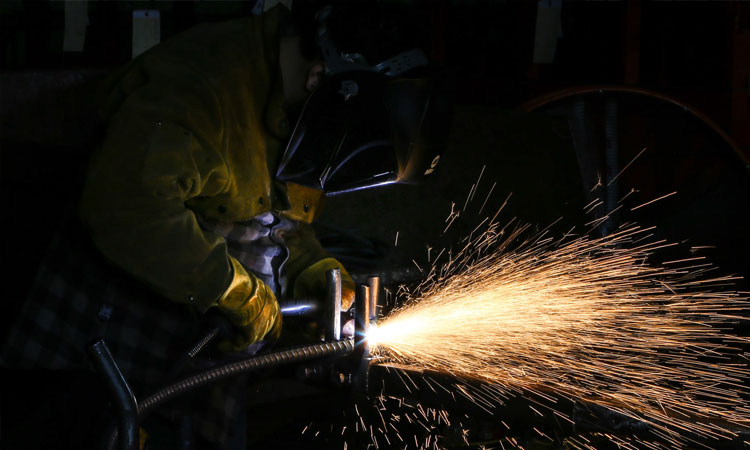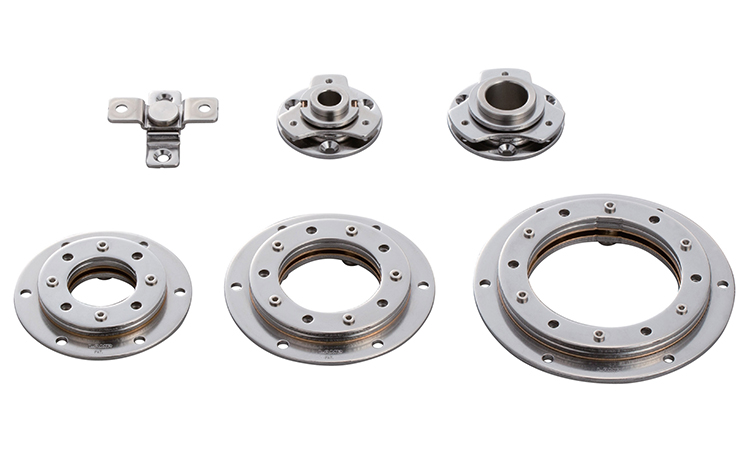Sugatsune introduces Swivel Torque Hinge HG-S for smooth…

6 Benefits of Hybrid Laser-Arc Welding | ENGINEERING REVIEW |Manufacturing | Industrial Sector Magazine & Portal
Hybrid laser-arc welding (HLAW) combines a laser beam with an electric welding arc. It’s part of the larger laser welding category and offers numerous advantages over traditional processes. Here are some of them.
1. Process Optimization Opportunities
Although people can theoretically combine lasers with any arc welding process, they frequently use them with metal inert gas (MIG) techniques. By doing so, they find numerous ways to improve their older processes.
Ed Hansen is the director of global product management in the flexible automation department of ESAB Welding. He explained some of the payoffs of hybrid systems, saying, “We’re really using the laser to achieve penetration. Normally, if you want to affect penetration in a MIG weld, you have to add more amperage.”
He clarified, “By using the laser to do the penetrating, we can dial back the amperage on the MIG and use the smallest weld that our structure will allow for engineering purposes. So the laser allows us to optimize the MIG.”
Hansen also spoke of how the laser beam stabilizes the arc, bringing better process synergy. “We can travel with the arc much faster than we could if we didn’t have a laser beam. That’s how we’re able to go so fast with the hybrid process,” he said.
2. Improved Safety When Combined With Automation
Welding professionals must receive training and wear the correct equipment to reduce the inherent risks. Arc flash incidents are among those threats. The associated temperatures can reach 35,000 degrees Fahrenheit, making them severe burn hazards. Workers can suffer those injuries even if they are 10 feet away from the incident.
There’s no single way to reduce the dangers, but automation could help. That’s because it could keep workers farther away from some of the most significant threats. Hybrid laser-arc welding is a good fit for such solutions. In one example, an Italian shipbuilding company purchased an automated production line totaling more than 984 feet in length. It included several robotic stations that welded T-beams onto thin-plate flat panels.
Industrial sectors are increasingly adopting robots to help humans. In one warehouse setting, a robot can pick 800 boxes per hour. That setup reduces the repetitive movements that could cause fatigue and mishaps. Welders can experience overexertion during their shifts, too, particularly when doing overhead or vertical welds. Automation doesn’t remove the need for human input, but it could reduce welding accidents.
3. Minimized Thermal Distortion Issues
Another beneficial aspect of hybrid laser-arc welding is its reduced heat input. That characteristic leads to decreased thermal distortion. Lowering the incidence rate of thermal distortion has been particularly advantageous in industries that use welding to join large pieces. Correcting issues in those cases causes a significant increase in manual labor.
The automotive industry is one sector that often utilizes HLAW. More specifically, the method works well for joining high-strength sheets that go into vehicle bodies or for brazing roof panels.
Many popular types of steel used in the automotive industry have a strength range of 980 to 1,500 megapascals. Hybrid laser-arc welding offers both high energy and efficiency that can limit the deterioration of material in the heat-affected zone (HAZ) when welding these steels.
4. Diversity of Welding Results
People who choose hybrid laser-arc welding for their applications can use two main types. The conduction method features a comparatively lower energy density and a laser beam spot that’s larger in diameter. It’s a good choice for highly visible welds, such as those associated with signs.
However, there’s also the keyhole method. It has a higher energy density and a smaller laser beam. This approach allows people to weld stacked pieces that previously required methods like resistance spot welding. People can use keyhole HLAW to achieve deep-penetration welds on thick materials with a single pass.
That advantage reduces the likelihood of welding defects. It also removes the need to chamfer the joints. When evaluating the keyhole and conduction methods, people should keep in mind that there’s no universally “best” option. It all depends on the desired outcome for the particular parts of the welding project.
5. Enhanced Business Competitiveness
Many company leaders discover that hybrid laser-arc welding can help them overcome obstacles to become more resilient in challenging marketplaces. As you may have already realized from a previous example here, HLAW is an often-chosen option in the shipbuilding sector.
In one case, a team wanted to improve the use of welding on low-temperature steel to create liquid natural gas tanks for marine vessels. They determined that hybrid laser-arc welding was a good avenue to pursue for several reasons. One benefit was a 10% reduction in the production time. Additionally, HLAW enabled the group to make the tanks out of 30-millimeter-thick, high-manganese steel rather than continuing to use 304 stainless steel.
They found that the new material offered similar strength and toughness but was less expensive. Moreover, their data showed that this updated approach resulted in a total welding time that was less than half that associated with 304 stainless steel. The researchers cited these advantages as some that would help companies stay competitive or address current limitations.
6. Overall Quality Improvements
When companies begin using hybrid laser-arc welding, their leaders often see notable, positive impacts on the quality of the output. For example, HLAW can reduce the need for rework and lower the scrap rate.
Additionally, HLAW is more efficient than other types of welding and it becomes especially so when applying automation. However, if decision-makers primarily seek to target quality by adopting hybrid laser-arc welding, they should choose some specific metrics to track throughout the implementation.
Doing that helps people stay focused on goals. Setting expectations also makes it easier to see whether HLAW is getting the anticipated results or if it’s necessary to make further tweaks to processes. Getting input from the welders using the method is also important, especially for learning the pros and cons compared to other fabrication methods previously used.
Are You Ready to Use Hybrid Laser-Arc Welding?
Hybrid laser-arc welding is not the best option for every project. However, the six perks detailed here will help you start appreciating why decision-makers often become interested in using it. You may need to significantly alter your current welding setup to move forward with HLAW. However, you may find the payoffs are well worth it.
Article by Emily Newton
Emily Newton is the Editor-in-Chief of Revolutionized. She has over four years experience covering the industrial sector.









